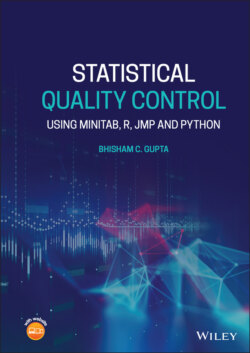Читать книгу Statistical Quality Control - Bhisham C. Gupta - Страница 57
2.4.2.5 Mistake‐Proofing
ОглавлениеMistake‐proofing is also known by its Japanese name, pokayoke. The technique is always handy, but it is especially useful in preventing defects when they are rare or when errors are random and non‐systematic.
There is a classic definition of mistake‐proofing: the complete elimination of errors. But over the years, mistake‐proofing has been expanded to include controls or warnings. With this version, having a machine shut down after a mistake is made, or a light or alarm sound when an error occurs, is considered mistake‐proofing. Checklists also fall into the control category. All of these are effective if the warning is heeded or the checklist is adhered to. But the gold standard, of course, is to have a design in which the mistake does not occur in the first place.
A classic example of mistake‐proofing is diesel and unleaded fuel nozzles at gas stations. You can’t put diesel fuel in your unleaded gas tank; the nozzles just won’t fit. This is an example of the elimination of a defect by design.
